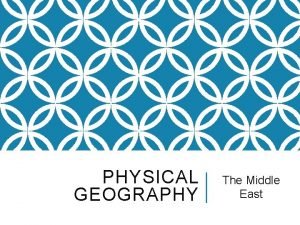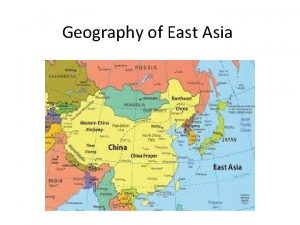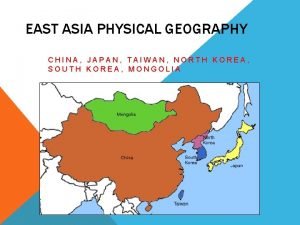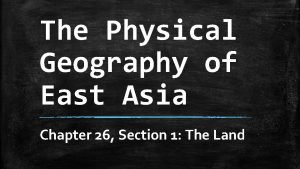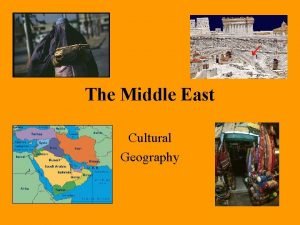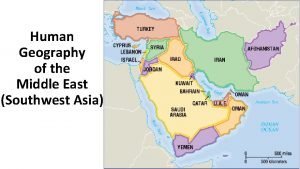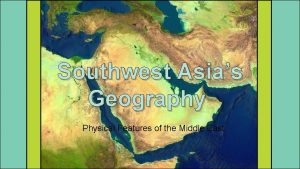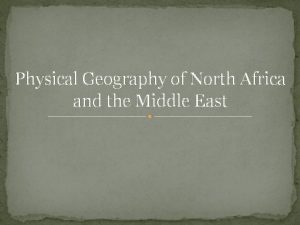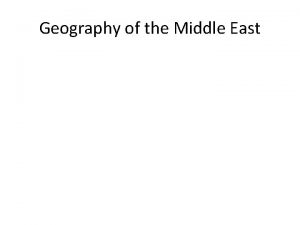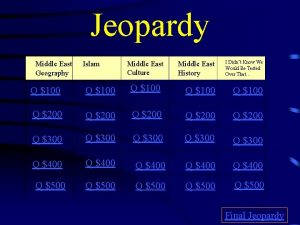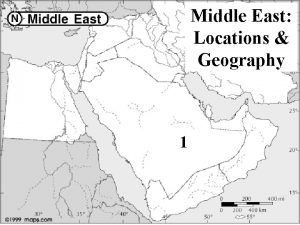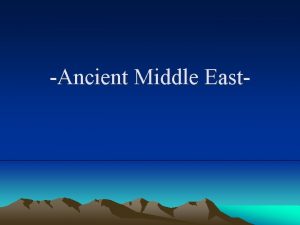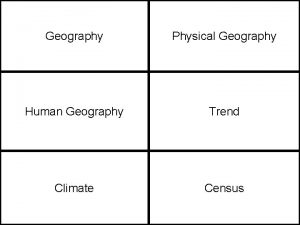PHYSICAL GEOGRAPHY The Middle East THE MIDDLE EAST









- Slides: 9

PHYSICAL GEOGRAPHY The Middle East

THE MIDDLE EAST v. A region comprised of areas in Southwest Asia and North Africa (above Sahara Desert) v 3000 years ago, it was the center of various trade routes between Europe, Africa, and Asia. v. It has been known for its turbulent history, often being conquered by domestic and foreign groups. v. Domestic- Native to the area v. Foreign- From another area v. This has led to a multitude of diverse ethnic

SETTLEMENT PATTERNS v. Physical Factors- most settlements cluster near bodies of water such as rivers and gulfs. People also settle near: vareas that have access to fresh water vlow-lying areas near fertile soil vtemperate and mild climate regions v. Human Factors- people settle in areas where they have access to: vnatural resources, veconomic activities, vtransportation routes.

CRADLE OF CIVILIZATION v. Fertile Crescent v. Once known as the Tigris and Euphrates River Valley, the “Cradle of Civilization” v“land that is located between the two rivers” v. Mesopotamia- First permanent settlement flourished due to water supply and fertile soil around 3500 B. C. v. Present Day: Iraq, Kuwait, Syria, Lebanon, Jordan, Israel v. Technological Advances- development of writing, creation of glass, invention of the wheel, and use of irrigation for crops.

NILE RIVER VALLEY v. The annual flooding of the river brought nutrients to the soil and allowed farmers to grow crops in abundance. v. Farmers were able to predict the floods and farming became more reliable. v. Farmers retained water for later use by developing an irrigation system. v. Irrigation- the artificial application of water to assist in the growing of crops in dry areas and during periods of little rainfall.

PERSIAN GULF v. Located between Iran and the Arabian Peninsula. It is an extension of the Indian Ocean. v. The discovery of oil transformed the region from desolation to commercial wealth as the demand for oil globally exploded.

THE SAHARA v. The largest desert in the world, stretching across African continent from the Atlantic Ocean to the Red Sea. v. Communications and travel across Sahara is difficult, and will be the reason for differences in development between North Africa and Sub-Saharan (Southern) Africa. v. Temperatures can rise to over 130 degrees. v. The desert consists of sand, mountains, gravel, and rock formations. v. Aquifers- Underground water supplies that can come to the surface. They can create an oasis. v. In an oasis wildlife and vegetation can survive.

SAHEL: THE “SHORE OF THE DESERT” v. Narrow band of dry grassland that runs east to west along the edge of the Sahara. It receives very little rainfall. v. People use the Sahel for farming and herding. v. The Sahara has spread into the Sahel leading to desertification- a process by which dry land regions become increasingly arid, losing bodies of water, vegetation and wildlife.

NILE DELTA AT NIGHT: What Can You Tell Me About This Picture?
